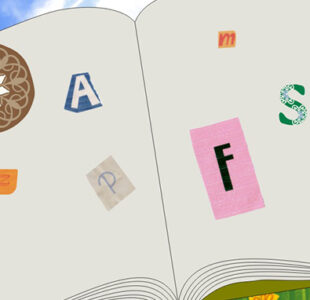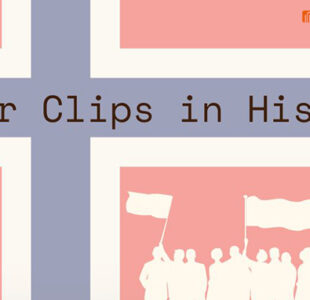- No Comment
Paper clips found on the pages of history
Adolf Hitler realized in April 1940, only a few weeks into World War II, a notable event in World History – as well as paperclip history, that he needed a strategy to break through the Allied stranglehold of Germany if he was to win the war. He focused his efforts on Norway, a dangerous venture, but the dominance of Norwegian waterways would make it simpler to bring products into Germany. Norway had proclaimed neutrality in the fight, but Hitler was not willing to let something as insignificant as neutrality prevent him from achieving what he wanted.
The Germans successfully launched their takeover of Norway after a few months of battle, forcing Allied soldiers away. The Norwegian royals and administration were similarly pushed from their homeland, forcing them to engage in commerce from exile in Britain. Meanwhile, the Norwegians were under German control.
With the genuine Norwegian government removed from the way, the Germans intended to demolish Norwegian heritage and substitute it with Nazi ideology. Norwegian teachers were instructed to serve the Nazi Party and propagate Nazism in their classrooms, while the church was instructed to preach “obedience to the fuhrer and the state.” Anti-Jewish laws were enacted and 700 Norwegian Jews were sent to Auschwitz. Mass slaughter was not uncommon; however, most were carried out on a lower scale in contrast to the atrocities that occurred in other parts of Europe. For five years, Norwegians had to cope with German soldiers on a daily basis. By 1945, around 400,000 German forces were stationed in Norway, commanding a population of approximately 4 million people.
Pupils at Oslo University began brandishing paperclips on their collars as a peaceful sign of resistance, togetherness, and patriotism in the fall of 1940, thereby, establishing resistor clip art in the paperclip history. Symbols of the royals and nation had already been forbidden, and they needed a smart method to express their opposition to Nazi philosophy. Paperclip bands and other forms of jewelry were created in addition to donning a single paperclip, symbolically linking Norwegians together during this tragedy, and with this, they flagged an important historical event in paperclip history.
What is with the paperclip? Aside from the principle of holding things together, it is suggested that the paperclip was adopted as a resistance symbol in part because many people wrongly believed that the paperclip’s creator Johan Vaaler was a Norwegian citizen. In 1901, Vaaler received a patent for his paper clip in both Germany and the United States, although he did not seek a patent in his own country Norway.
Nonetheless, the notion that the clip was developed by a Norwegian citizen was widespread, and the premise that paperclips tied things together while also being cheap, widely available, and unobtrusive made it appear to be the perfect emblem for nonviolent, quiet opposition in Norway. The Germans eventually realized that the paper clip was employed as a symbol of resistance, and so donning one became a criminal violation.
Norwegians wore paperclips as a symbol of opposition towards anti-semitism and nazism, and donning one may result in jail – and yet many Norwegians wore them nevertheless. The paperclip was conceived in Norway, and it became a national wartime emblem as a result. The potential of this modest small gadget to bond things together was the motivation for the Norwegian people’s joining together. As a result, many people would wear paper clips on their sleeves and collars, or on their hats, throughout the German occupation. Who knew paperclip history was so profound and nuanced?
People wore paperclips “to express patriotism and upset the Germans,” as per historian Henry Petroski. Sporting paperclips was not sanctioned by the government and began as a grassroots effort. People who objected to the Nazis used to wear bright red caps and jackets, but because this was so visible, the resistance movement switched to paperclips instead as it added a chapter to the paperclip history.
Paperclip history has many different aspects that make a significant impact on the world as it is now, from binding newspapers together in the 1800s, resisting Nazi Germany in the 1900s and being a staple of offices in the 2000s, it has seen all the highs and lows of our dynamic world.
The Germans successfully launched their takeover of Norway after a few months of battle, forcing Allied soldiers away. The Norwegian royals and administration were similarly pushed from their homeland, forcing them to engage in commerce from exile in Britain. Meanwhile, the Norwegians were under German control.
With the genuine Norwegian government removed from the way, the Germans intended to demolish Norwegian heritage and substitute it with Nazi ideology. Norwegian teachers were instructed to serve the Nazi Party and propagate Nazism in their classrooms, while the church was instructed to preach “obedience to the fuhrer and the state.” Anti-Jewish laws were enacted and 700 Norwegian Jews were sent to Auschwitz. Mass slaughter was not uncommon; however, most were carried out on a lower scale in contrast to the atrocities that occurred in other parts of Europe. For five years, Norwegians had to cope with German soldiers on a daily basis. By 1945, around 400,000 German forces were stationed in Norway, commanding a population of approximately 4 million people.
Pupils at Oslo University began brandishing paperclips on their collars as a peaceful sign of resistance, togetherness, and patriotism in the fall of 1940, thereby, establishing resistor clip art in the paperclip history. Symbols of the royals and nation had already been forbidden, and they needed a smart method to express their opposition to Nazi philosophy. Paperclip bands and other forms of jewelry were created in addition to donning a single paperclip, symbolically linking Norwegians together during this tragedy, and with this, they flagged an important historical event in paperclip history.
What is with the paperclip? Aside from the principle of holding things together, it is suggested that the paperclip was adopted as a resistance symbol in part because many people wrongly believed that the paperclip’s creator Johan Vaaler was a Norwegian citizen. In 1901, Vaaler received a patent for his paper clip in both Germany and the United States, although he did not seek a patent in his own country Norway.
Nonetheless, the notion that the clip was developed by a Norwegian citizen was widespread, and the premise that paperclips tied things together while also being cheap, widely available, and unobtrusive made it appear to be the perfect emblem for nonviolent, quiet opposition in Norway. The Germans eventually realized that the paper clip was employed as a symbol of resistance, and so donning one became a criminal violation.
Norwegians wore paperclips as a symbol of opposition towards anti-semitism and nazism, and donning one may result in jail – and yet many Norwegians wore them nevertheless. The paperclip was conceived in Norway, and it became a national wartime emblem as a result. The potential of this modest small gadget to bond things together was the motivation for the Norwegian people’s joining together. As a result, many people would wear paper clips on their sleeves and collars, or on their hats, throughout the German occupation. Who knew paperclip history was so profound and nuanced?
People wore paperclips “to express patriotism and upset the Germans,” as per historian Henry Petroski. Sporting paperclips was not sanctioned by the government and began as a grassroots effort. People who objected to the Nazis used to wear bright red caps and jackets, but because this was so visible, the resistance movement switched to paperclips instead as it added a chapter to the paperclip history.
Paperclip history has many different aspects that make a significant impact on the world as it is now, from binding newspapers together in the 1800s, resisting Nazi Germany in the 1900s and being a staple of offices in the 2000s, it has seen all the highs and lows of our dynamic world.
Related Posts

5 Stories about Paper Clips that will…
Have you ever given thought to how frequently we take paper clips

Paperclips in History: The Norwegian Resistance Movement
During World War 2, Nazi Germany conquered Norway, and the country's populace
